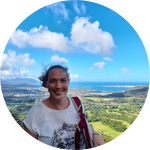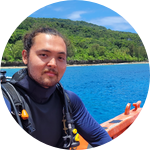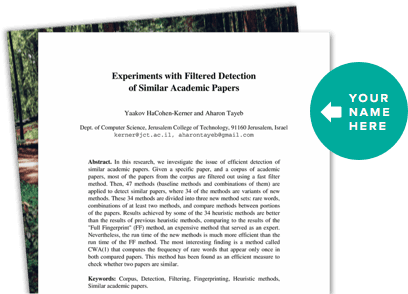About This Project
This study investigates how altering module structures impacts coral fragment fusion, growth, and survival for reef restoration efforts in Hawaiʻi. Using 17 designs with diverse complexities and fragments from three coral growth forms, experiments will span East and West Oʻahu. Monitoring for a year will track survival, growth, fusion, reef complexity, and biodiversity. The aim is to develop novel designs and build collaborative relationships with local communities.
Ask the Scientists
Join The DiscussionWhat is the context of this research?
Corals produce hardened skeletal structures of varying shapes, broadly referred to as growth forms. These include encrusting, arborescent (tree-like), digitate, corymbose (bush-like), massive (dome-like), columnar, tabular, foliose (flower-like), and free-living. Growth forms determine growth rates, mechanical strength, mortality, competition with neighbors, habitat space, and structural complexity. Structural complexity can be quantified by measuring rugosity, fractal dimension, and height range, which are constrained and related to biodiversity. Therefore, restoring/bolstering structural complexity of a reef through the manipulation of outplant module design and fragment growth form could enhance local biodiversity, productivity, local reef resilience, and coastal protections.
What is the significance of this project?
This study will provide tangible insights into outplant module designs that best bolster local, community driven, coral reef restoration efforts throughout Hawaiʻi, extending to regions of the Tropical Pacific. The targeted local end-users of this research are our project partners; Kuleana Coral Restoration and the State of Hawaiʻi’s Division of Aquatic Resources Hawaiian Coral Restoration Nursery. Future research avenues may present themselves for applying these research methods to other coastlines that host tropical coral reefs. In the face of threats to coral reefs, by working and partnering with local coral reef restoration organizations, community members/groups, and researchers, we plan to give Hawaiʻi’s reefs a fighting chance.
What are the goals of the project?
Our goal is to provide local coral reef restoration groups with information (e.g., module designs and fragmenting protocols) to bolster their efforts to help restore Hawaiʻi’s coastal ecosystems, while developing collaborative working and research relationships with local communities. Our objective is to conduct an experiment to determine the best combinations of out-plant module design and Hawaiian coral species growth forms to promote rapid fusion of fragments, and thereby robust reef growth and survivorship.
Budget
These funds will assist with paying for labor and materials to create novel concrete structures as part of a larger project focused on research that will bolster coral reef restoration efforts. The silicon mold kit will be used to create negative molds of different 3D structures. The concrete will be mixed by the part-time undergraduate field assistant and poured into the molds. After curing, the concrete modules will be removed from the molds and allowed to dry. Once dry, coral fragments will be attached to the surface of the modules and deployed at different study sites around Hawaiʻi. The undergraduate field assistant will participate in monitoring surveys via snorkel alongside the PI of the project.
Endorsed by
 Project Timeline
Project Timeline
After receiving funding, I will begin recruitment and hiring procedures for an undergraduate intern to assist with the project. The production of the modules will begin shortly after, with the goal to complete them in two months. The most difficult parts of accomplishing the milestones of this project will be ensuring we are within our permit guidelines and coordinating the logistics for module deployment. To tackle this, I will be planning all deployment logistics months in advance.
Nov 20, 2024
Project Launched
Dec 16, 2024
Recruit undergraduate intern
Dec 31, 2024
Design and 3D print module positives
Jan 31, 2025
Cast silicon molds
Jun 30, 2025
Have 204 concrete modules ready to go into the water
Meet the Team
Affiliates
Team Bio
Our team specializes in how aspects of structural complexity influence ecological functions and services. We are made up of researchers in various stages in their careers. Our lead is Jon Ehrenberg, a PhD student, who is advised by Dr. Joshua S Madin. Andres Jojoa will be our undergraduate field/lab assistant, who is mid-way through their degree program.
Jon Ehrenberg
In my early childhood I was fascinated with the marine life that thrived along the coast of the island where I was born, Hawaiʻi Island. After high school, I enrolled in the Marine Science Program at the University of Hawaiʻi at Hilo (UHH). I studied anything and everything related to the ocean and spent my free time exploring tide pools, snorkeling, or diving. I had a plethora of questions, some of which I was able to answer, and others that still remain unanswered. I was inspired to pursue graduate studies to investigate those unanswered questions.
Growing up in Hawaiʻi, a strong sense of community and environmental stewardship was instilled in me. Mālama ʻāina is a Hawaiian term that means to take care of the land and the natural resources it provides. Mālama ʻāina extends throughout all our watersheds and the waters surrounding the archipelago. Mālama ʻāina was practiced by ancient Hawaiians and was done through the careful management and sustainable use natural resources. This practice is having resurgence with modern stewards of the land looking to researchers to inform their management decisions. I have learned that even if the research is sound, if the researchers do not appropriately communicate, change stagnates. Engaging the public can help us discover unseen aspects of our own research through fresh eyes. Positive change is possible and can happen very quickly but only if the public collaborate with scientists to spur change.
I have conducted field and lab research, interpreted datasets, created reading materials for the public, and presented at symposiums and community events. I have been given the opportunity to communicate how Hawaiʻi’s organisms and ecosystems are responding to changes in climate and human activity. I am still learning new scientific methods, ecoinformatics statistical analyses, and efficient ways to communicate with the public.
Lab Notes
Nothing posted yet.
Project Backers
- 0Backers
- 0%Funded
- $0Total Donations
- $0Average Donation


